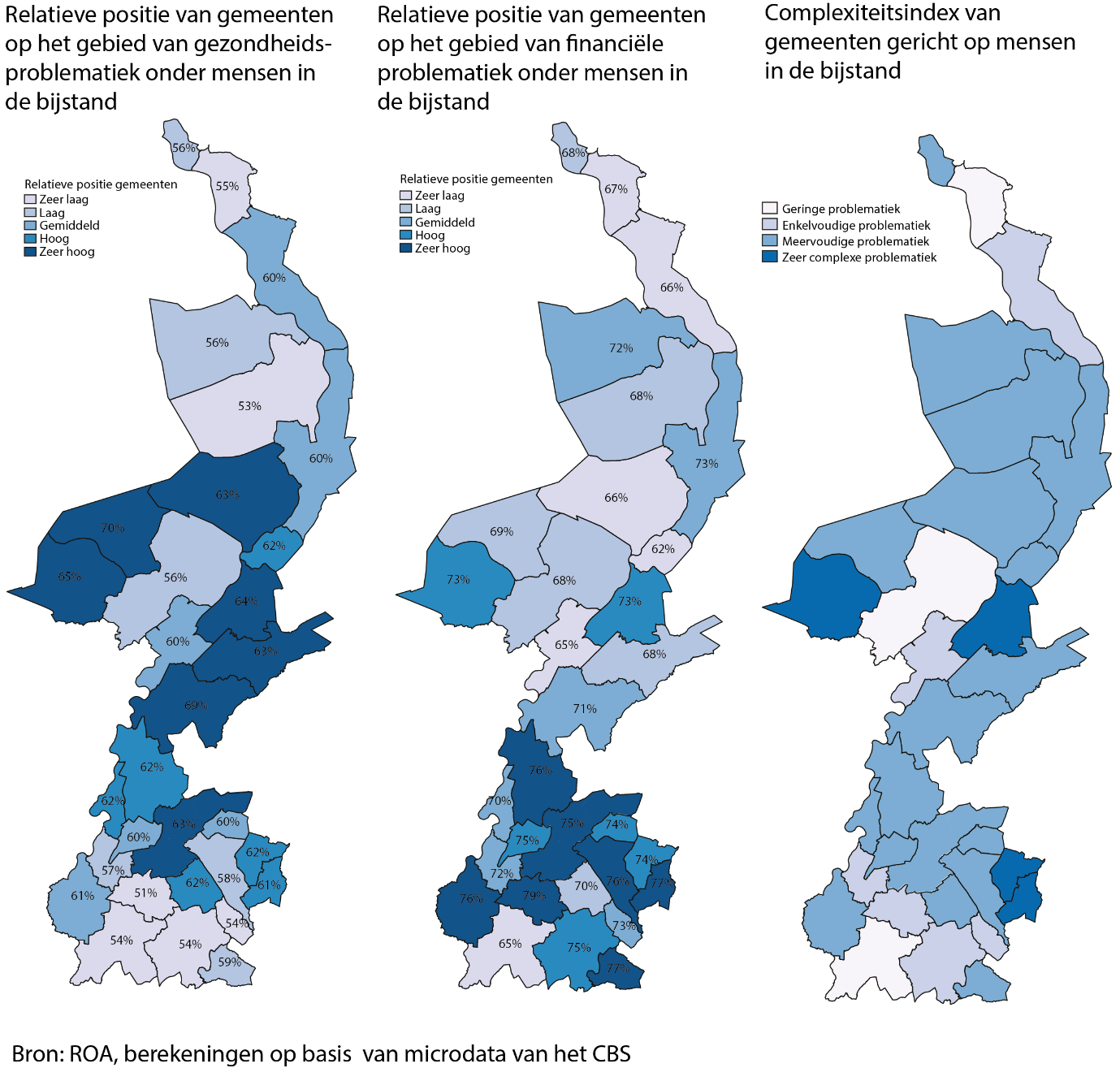What are the job chances of Limburgers on benefits?
How do debts or health problems affect benefit claimants’ chances of successfully reintegrating into the labour market? And what is the influence of their home situation or level of education? A study by at the Research Centre for Education and the Labour Market (ROA) at Maastricht University (UM) assessed the employment opportunities of people on benefits in all municipalities in the Province of Limburg. The data is published in a fact sheet today.
Reintegration opportunities
The Maastricht researchers drew up profile descriptions distinguishing three groups of people on benefits: (1) disability benefit claimants, (2) unemployment benefit claimants and (3) social assistance benefit claimants. ‘Social assistance benefit recipients with financial problems have a much smaller chance of reintegration,’ says Annemarie Künn-Nelen, project leader at the ROA. ‘The chances of reintegration decrease even further if a person with financial problems also has a low level of education. But if you also have health problems, it actually has little effect on your reintegration opportunities.’ In the Limburg municipalities, between 62% and 79% of all social assistance benefit recipients have financial problems, such as a high level of debt. This is a much higher percentage than among people receiving unemployment benefit, of whom between 14% and 29% have financial problems in the Limburg municipalities. In 18 of the 31 municipalities in Limburg, social assistance recipients have multiple problems. In four municipalities, the problems are often very complex. Municipalities also regularly observe multiple and complex problems among people receiving both unemployment and disability benefits.

4Limburg
The ‘Profile description of benefit-dependent residents in Limburg’ is part of the UM-wide 4Limburg programme, which is supported by the Province. This programme aims to foster sustainability, vitality and inclusivity in Limburg society. A major challenge for Limburg lies in increasing the societal and economic participation of jobseekers, early school-leavers and disadvantaged residents. Mapping the extent and complexity of the problems experienced by benefit-dependent residents is a prerequisite for a successful reintegration policy. In a separate pilot study for the municipality of Heerlen, the ROA researchers also applied the profile descriptions at district level. This revealed interesting differences between different neighbourhoods in both the nature and complexity of the problem. The ROA can make similar profile sketches for other provinces and for municipalities beyond Limburg.
Explanation graphic above:
Relative position of municipalities in the field of health problems among people receiving social assistance benefit
- Very low
- Low
- Average
- High
- Very high
Relative position of municipalities in the field of financial problems among people receiving social assistance benefit
Relative position of municipalities
- Very low
- Low
- Average
- High
- Very high
Complexity index of municipalities regarding people receiving social assistance benefit
- Minimal problems
- Single problems
- Multiple problems
- Highly complex problems
Source: ROA, calculations based on microdata by Statistics Netherlands (CBS)
Also read
-
Companies do often not live up to their sustainable hallmark
The ESG rating, the hallmark that indicates that companies are conducting business in a socially responsible way, often appears to be a promise that only exists on paper. While large investors, such as Dutch pension funds, actually use it to make responsible investments.

-
Corona: some pupils are extra duped by first closure primary schools
During the first school closure in primary education in the 2019/2020 school year as a result of the COVID-19 crisis, pupils from all backgrounds suffered a delay in learning growth compared to the previous years. However, the delay is greater for some pupils than for other pupils. This is shown by...

-
Universities of Applied Sciences can do more for equal opportunities in the labour market
Graduates from Dutch Universities of Applied Sciences who have a migrant background experience more difficulty finding jobs than do other graduates. Employers’ selection procedures and discrimination are often cited as major reasons. However, a recent study by the Research Centre for Education and...
